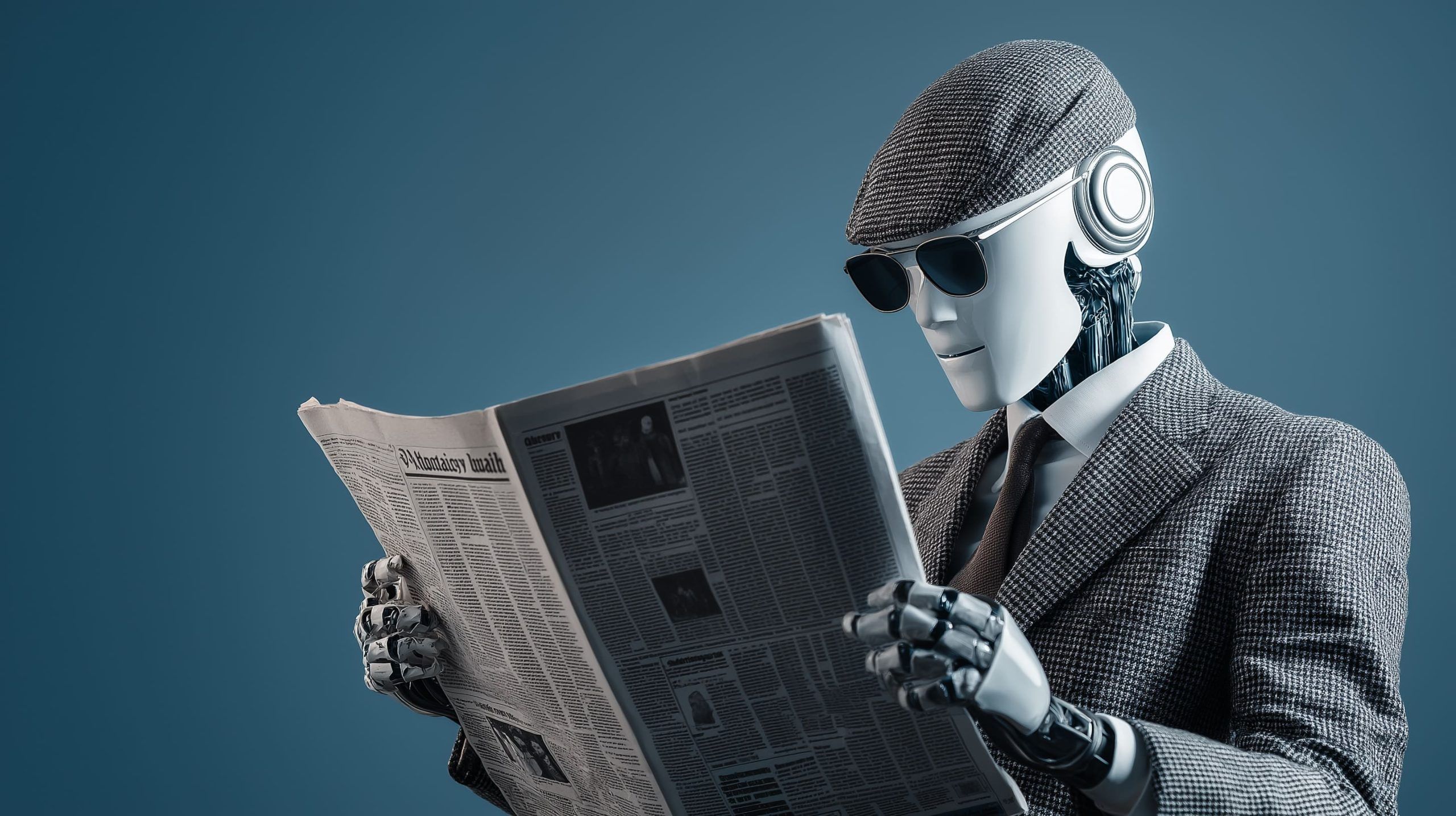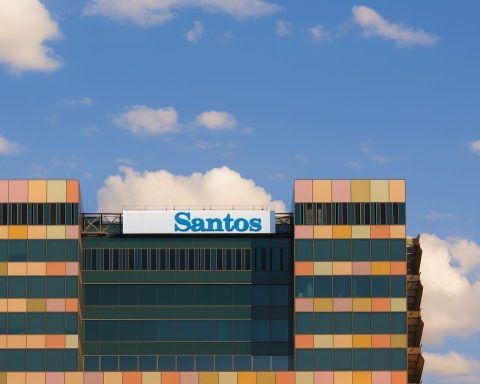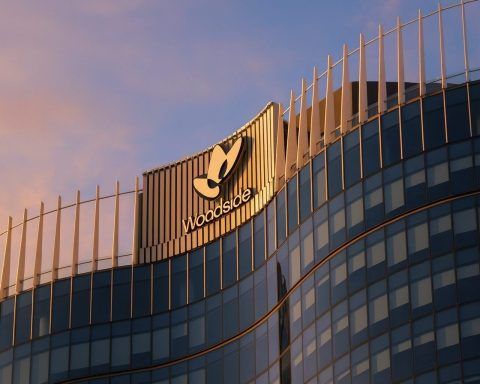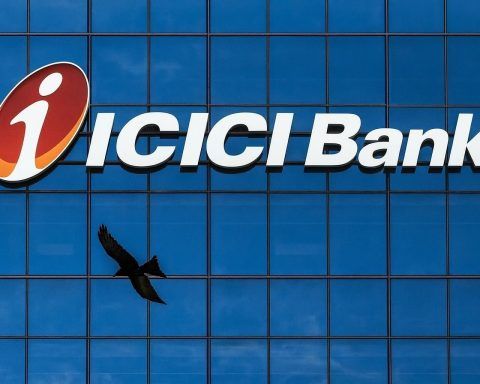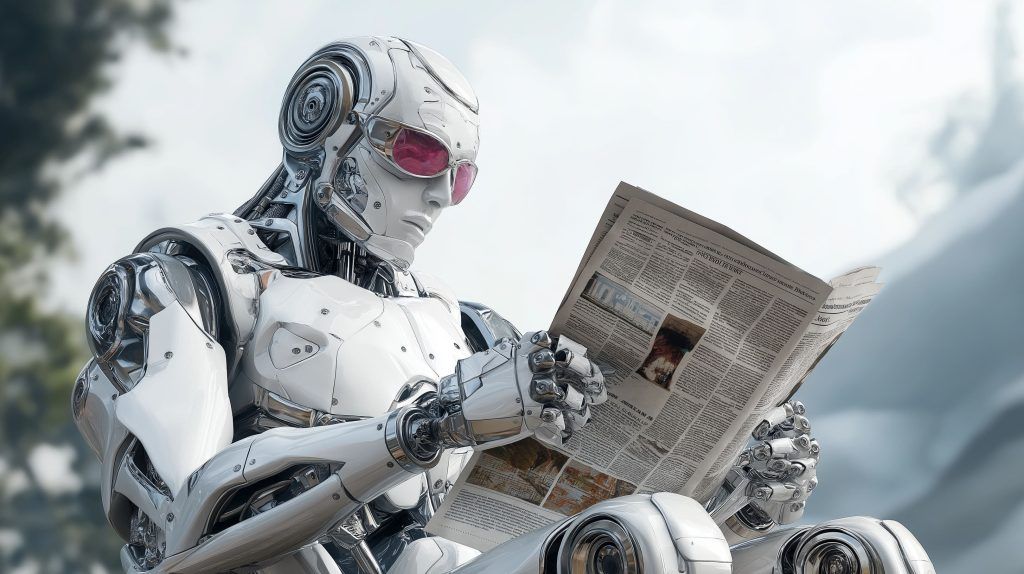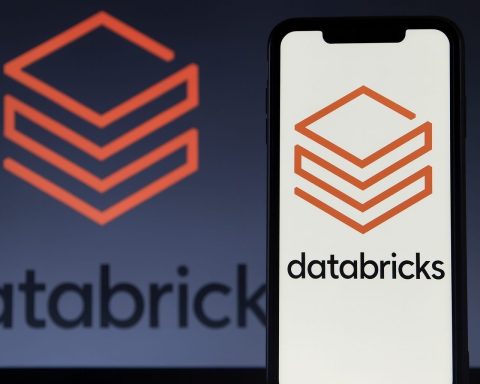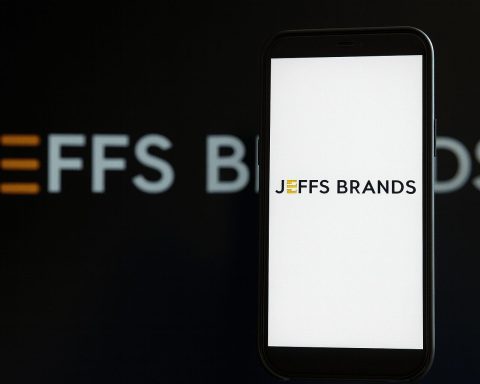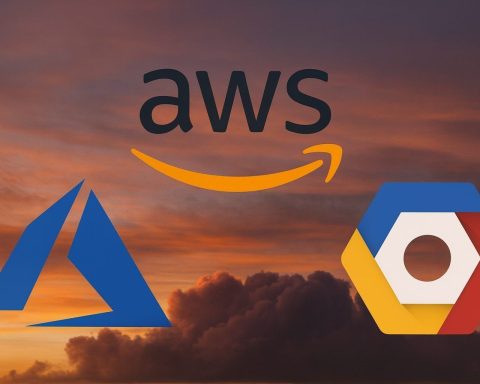From streaming shake-ups to space races and breakthrough gadgets, here are the biggest tech stories and expert insights from August 5–6, 2025 (excluding AI).
Consumer Tech & Media: Price Hikes and Podcast Pivots
- Spotify Raises Prices Globally: Music streaming giant Spotify announced it will raise Premium subscription fees by €1 (from €10.99 to €11.99 per month) across dozens of markets in Europe, Asia-Pacific, the Middle East, Africa, and Latin America [1] [2]. The move, effective in September, comes on the heels of a disappointing earnings report. Investors cheered the decision – Spotify’s stock jumped ~5% in pre-market trading after the news, as higher prices are expected to boost margins [3]. CEO Daniel Ek had faced questions about not raising prices more often; this latest hike shows a new confidence in Spotify’s pricing power. Existing subscribers will be notified by email over the next month about the change [4].
- Amazon Overhauls Wondery Podcasts: In the streaming audio space, Amazon is restructuring its Wondery podcast studio and cutting 110 jobs [5] [6]. The shake-up will shift hit narrative shows like Business Wars to Amazon’s Audible platform, while creator-led podcasts (e.g. Armchair Expert) move to a new creator-focused division [7] [8]. Wondery’s CEO is departing amid the changes [9]. An industry analyst noted “this isn’t just about layoffs – it’s the collapse of a podcast strategy that couldn’t keep pace with video-led rivals like YouTube and Spotify”, underscoring how listener habits have shifted toward video podcasts [10]. Amazon says the revamp will help podcast creators monetize across more channels [11], but it also marks a retreat from Amazon’s earlier ambitions in original, audio-first programming.
- E-Commerce Shake-Up in Emerging Markets: Fast-fashion upstarts Shein and Temu made headlines for outpacing global retail giants in South Africa’s online market, highlighting the growing impact of Chinese e-commerce platforms abroad [12]. Their aggressive pricing and social media tactics have begun eroding the dominance of established retailers, a trend to watch in other regions as well.
Gaming & Entertainment: Nintendo’s Next-Gen Moves
- Nintendo’s Switch 2 Gains Momentum: A late-July Nintendo Partner Showcase offered a glimpse of the upcoming Switch 2 console, and early signs point to a major improvement in third-party game support. Unlike previous Nintendo systems that lagged years behind on big games, the Switch 2 is narrowing the release gap for technically demanding titles. Observers noted that games like Elden Ring and others are slated to launch on Switch 2 much closer to their releases on rival platforms, indicating Nintendo’s new hardware can finally handle modern AAA games. Industry watchers call this a “promising sign” that Nintendo could shed its image of being a generation behind in performance [13]. (No official release date for the Switch 2 has been announced yet, but anticipation is high.)
- Streaming Content Trimmed: In Hollywood, the trend of tech firms pruning their streaming content continued. For example, Warner Bros. Discovery quietly pulled certain shows from HBO Max as cost-cutting persists industry-wide (following the pattern set by Disney and others earlier in the year). No major AI-centric content decisions were reported in this timeframe, keeping the focus on conventional media strategy shifts.
Big Tech & Market Moves: IPO Surges and Stock Milestones
- Figma’s Blockbuster IPO: Design software startup Figma made waves with a mid-summer IPO that far exceeded expectations. After debuting on July 31 at around a $20 billion valuation, Figma’s stock rocketed to nearly $68 billion in market cap by the end of its first trading day [14] – more than triple what Adobe had offered to acquire it for in 2022. Though shares pulled back about 20% from their peak in early August, the company’s value remains astronomically high for a recent IPO. Former FTC Chair Lina Khan took a victory lap, arguing Figma’s success “is a great reminder that letting startups grow independently… can generate enormous value” [15] – a pointed reference to regulators’ decision to block Adobe’s takeover. Tech analysts, however, noted that Figma’s rich valuation is due to its own growth and product merit, not just regulatory intervention [16]. Either way, the $68 billion valuation has reignited debates on Big Tech M&A and proved that investors see huge potential in standalone tech firms.
- Microsoft Hits $4 Trillion Market Cap: Another milestone in the markets – Microsoft briefly joined the exclusive club of companies worth $4 trillion. Strong cloud and enterprise software earnings in late July propelled Microsoft’s valuation past the $4 trillion mark on August 1 [17] [18], making it only the second public company ever to do so (chipmaker Nvidia was first, buoyed by the AI boom). Analysts credited Microsoft’s years-long focus on cloud computing and subscription services for this record run [19]. While the stock fluctuated below the milestone thereafter, the feat underscores how Big Tech’s leaders are pulling away from the pack, with Microsoft’s shares up ~40% year-to-date [20]. (For context, Apple is just a hair under $4T, and Google and Amazon trail behind.) The achievement also highlights investors’ continued enthusiasm for established tech giants outside of the AI realm – Microsoft’s surge is rooted in enterprise software strength, not just hype.
- Snap Stumbles in Social Media: In social media news, Snap Inc. (Snapchat) reported its slowest revenue growth in over a year, blaming intensifying competition and a recent ads platform glitch [21] [22]. Snap’s quarterly sales grew only 6%, missing estimates, and the company warned that a bug in its advertising systems hurt results [23]. The stock fell on the report as Snap faces an uphill battle against TikTok and Instagram. (Notably, Snap did not blame any AI product issues – the challenges were old-fashioned competition and tech snafus.) Executives said they’re improving the ad platform and rolling out new features to re-accelerate growth [24].
- Tech M&A and Investments: In M&A, TPG Capital agreed to buy Australian automotive software firm Infomedia for about $420 million [25] – a reminder that traditional software deals are still happening amid the AI frenzy. And in the startup arena, sources say payments giant Stripe led a hefty new investment in an emerging fintech company, signaling continued appetite for fintech innovation (details were scant as of press time, with more expected to be announced later in the week). These deals show that investors remain active across tech sectors beyond just AI startups.
Electric Vehicles & Transportation: Bumpy Roads and Big Bets
- Tesla’s $29 Billion Musk Payout: Electric car leader Tesla made headlines by granting CEO Elon Musk an eye-popping 96 million-share award worth about $29 billion [26] [27]. The board approved the giant stock grant – one of the richest pay deals ever – as a special incentive to keep Musk as CEO through 2027 [28] [29]. Musk can only vest the full award if he stays in a top executive role for at least two more years and if an earlier court ruling voiding his 2018 pay package (worth $50 billion) isn’t reversed [30] [31]. Tesla’s board argues this is critical to secure Musk’s focus on the company’s “crucial pivot” from electric cars to future projects like robotaxis and humanoid robots [32]. Investors reacted positively – Tesla stock ticked up ~2% after the announcement [33]. “This binds Musk to Tesla for the next two years,” said one investment manager, calling Musk’s leadership “key to the company’s value.” [34] Still, some governance experts blasted the move as “just a repackaged version of the voided 2018 award that renders the court decision meaningless,” arguing it sets a troubling precedent [35]. Love it or hate it, the package underscores Tesla’s commitment to its mercurial founder at a time the automaker faces growing competition and other challenges.
- Tesla Loyalty Takes a Dive: Alongside Tesla’s pay news came an eye-opening data point about its brand. Tesla’s once-industry-leading customer loyalty has plummeted over the past year [36]. New analysis from S&P Global Mobility shows that by early 2025, only about 50% of U.S. Tesla owners replacing their car chose another Tesla, down from 73% in mid-2024 [37]. S&P analyst Tom Libby called it “unprecedented… I’ve never seen such a rapid decline in loyalty” [38]. The timing coincides with Musk’s foray into politics – notably his public endorsement of Donald Trump in mid-2024 – which alienated a chunk of Tesla’s eco-conscious customer base, analysts say [39] [40]. The loyalty rate hit a low of ~50% in March 2025 (around the industry average) before rebounding slightly to 57% in May [41]. Tesla is also losing ground in attracting new buyers: rivals like Ford, GM, Porsche and even EV startups are now poaching more Tesla owners than they lose [42]. Tesla’s board even acknowledged Musk’s “tumultuous” recent actions have “tarnished its brand”, according to Reuters [43]. The loyalty nosedive, coupled with an aging vehicle lineup, has prompted questions about whether Musk’s outside ventures (and controversies) are hurting Tesla’s sales [44] [45]. Tesla’s challenge now is not just cutting prices or upgrading models, but repairing its brand image among some once-loyal fans.
- EV Startups Hit Policy Speed Bumps: U.S. EV makers Rivian and Lucid issued cautious outlooks after posting disappointing Q2 earnings, citing a raft of unfavorable policy changes and trade issues [46] [47]. Both California-based startups saw their shares slide (Rivian -4%, Lucid -7%) as they warned 2025 will be tougher than expected [48] [49]. A key factor: the new U.S. administration (President Trump’s) ended federal EV tax credits and lifted emissions penalties on gas guzzlers, undercutting EV pricing and removing a major incentive for buyers [50]. At the same time, high import tariffs on parts and China’s export curbs on rare earth minerals (vital for EV motors) are driving up costs [51] [52]. Rivian said disruptions in rare-earth supply from China forced it to slow production and raised its vehicle cost per unit by 8% [53]. It also had to slash its expected revenue from selling regulatory credits (since gas-car makers need them less now) [54] [55]. Lucid, for its part, cut its full-year production forecast and saw its margins hit by newly imposed tariffs [56]. The upshot: these ambitious EV upstarts are now navigating a far more hostile policy environment in the U.S. “The road just got much bumpier,” one analyst quipped, as political winds have shifted against EV subsidies. Both companies are focusing on improving efficiency and shoring up demand in a market that suddenly looks more competitive and less subsidized than a year ago.
Semiconductors & Hardware: Bright Spots and Red Flags
- Upbeat Chipmaker Earnings in Europe: German semiconductor firm Infineon delivered encouraging news, raising its profit outlook after a stronger-than-expected fiscal Q3 [57]. Infineon – which makes automotive and power chips – saw its operating profit margin hit 18%, beating forecasts of ~15.8% [58]. It now predicts full-year margins in the “high teens,” up from mid-teens [59]. The CEO said inventory gluts in sectors like consumer electronics are finally easing, and demand from electric vehicles and renewable energy is fueling growth [60]. “The worst of the excess inventory seems behind us,” Infineon’s chief noted cautiously [61]. Notably, Infineon acknowledged rising orders related to AI data centers as well, though it avoided overhyping AI in its guidance [62]. This prudence actually reassured investors – Infineon’s stock held steady despite wider market volatility [63]. In short, pockets of the chip industry (like auto and power chips) are proving resilient, even as other areas see headwinds.
- Intel’s Credit Downgrade: On the flip side, chip giant Intel got a sobering verdict from credit agency Fitch Ratings, which downgraded Intel’s debt to BBB (just two notches above “junk”) with a negative outlook [64]. Fitch cited “heightened challenges maintaining demand” for Intel’s processors amid intense competition from the likes of AMD, Broadcom, and even Apple’s in-house chips [65]. The rating agency warned Intel’s credit metrics are weak and will require “stronger end markets and successful product ramps, along with debt reduction over the next 12–14 months,” to avoid further downgrade [66]. In particular, Intel has been bleeding market share in PC CPUs (where Qualcomm and AMD are encroaching) and has yet to turn around its money-losing server chip business [67]. Fitch’s outlook remains negative, meaning it could cut Intel again if things don’t improve [68]. This is a striking fall from grace – recall that Intel once boasted A-rated credit, but costly delays and missteps have left it just above junk status [69]. Intel’s massive investments in new chip fabs and foundry services are a long-term play that haven’t yielded returns yet, so 2025–2026 will be critical for a turnaround. The downgrade puts added pressure on CEO Pat Gelsinger’s efforts to reboot Intel’s product lineup and regain process technology leadership.
- TSMC Thwarts a Chip Secret Leak: In Taiwan, the world’s leading chip manufacturer TSMC disclosed it foiled a potential theft of its crown-jewel 2-nanometer process technology [70]. TSMC’s internal security systems detected “unauthorized activities” by certain employees, and the company swiftly fired those involved and initiated legal action [71]. An investigation – now in the hands of Taiwanese prosecutors – found that two current TSMC staff and one former employee had illicitly gathered confidential data on TSMC’s upcoming 2nm chips [72] [73]. Authorities have detained three individuals under Taiwan’s national security law in connection with the case [74] [75]. Early reports from Nikkei suggest the suspects were trying to steal technical details of the 2nm process, which is slated to power chips for Nvidia, Apple, Qualcomm and others in coming years [76] [77]. TSMC emphasized its “zero-tolerance policy” on IP theft and vowed to prosecute offenders fully [78] [79]. Analysts say this incident underscores the intense espionage risks in the semiconductor race – with state-of-the-art chip know-how now akin to national security assets. Fortunately, TSMC believes it caught the leak before any secrets left the company’s walls [80]. The quick detection “shows TSMC’s internal security is working, but also that the race for leading-edge chips is rife with spying attempts,” noted one expert. It’s a stark reminder that as TSMC and Samsung push towards 2nm and beyond, trade secrets are highly sought-after prizes (often with geopolitics in the background).
- Apple Supplier Signals Strong Chip Demand: In semiconductor-adjacent news, Skyworks Solutions, a supplier of wireless chips to Apple, forecasted upbeat quarterly results on the back of robust demand for mobile and Wi-Fi components [81]. Skyworks’ bullish outlook suggests the smartphone supply chain is healthy heading into the fall – a positive indicator for the upcoming iPhone cycle and 5G device sales. The company cited improving orders from its “largest customer” (widely understood to be Apple) and others, sending its stock up after the report [82]. This stands in contrast to some weaker results from other chipmakers, highlighting that consumer electronics demand, while not at 2021’s peak, is stabilizing in certain areas.
Telecom & Space: Satellite Internet Shakeups and Record Launches
- Amazon Kuiper Snags Australia Deal Over Starlink: In a surprising upset in satellite broadband, Amazon’s Project Kuiper (which hasn’t even launched service yet) beat out SpaceX’s Starlink for a major contract with Australia’s National Broadband Network (NBN) [83] [84]. The Australian government will use Amazon’s planned low-Earth-orbit (LEO) satellites to connect ~300,000 remote premises that currently lack reliable internet [85]. Industry observers were struck that NBN chose Amazon’s Kuiper – an unproven network with only test satellites in orbit – over Elon Musk’s Starlink, which already has 250,000 Australian users and a functioning constellation [86]. According to NBN officials, one factor was “sovereign risk”: Australian policymakers were wary of relying entirely on Starlink (a U.S.-controlled system) for critical infrastructure [87]. “Total dependence on Starlink would not be seen as favorable… If a future U.S. administration was unhappy with something, it could use Starlink for political purposes,” warned telecom analyst Paul Budde [88]. By diversifying with Amazon, Australia gains a bit more control. Amazon, for its part, is investing $10+ billion in Kuiper and expects to start launching production satellites in 2024; it will begin service in Australia next year and gradually replace the country’s aging Sky Muster satellites through 2032 [89]. SpaceX called the decision a “missed opportunity” but did not formally challenge it [90]. The deal is a huge boost for Amazon, essentially guaranteeing a major customer for Kuiper’s rollout. It also signals that Starlink’s dominance in satellite internet isn’t unquestioned – governments may seek alternatives for strategic reasons, even if Starlink is operational sooner.
- Europe’s Satellite Alternative Shines: Speaking of alternatives, Eutelsat OneWeb – the French-backed LEO satellite operator that merged OneWeb’s constellation with Eutelsat’s geostationary business – reported better-than-expected annual revenues and touted its role as “Europe’s answer to Starlink.” The company’s connectivity and government services revenue hit €1.23 billion, topping forecasts [91] [92]. Eutelsat said demand is “booming” from government and enterprise clients, including in Ukraine (where it’s providing wartime communications) and Taiwan (keen for non-U.S. options) [93] [94]. While Eutelsat/OneWeb isn’t competing head-on for everyday consumers, it’s carving a profitable niche in in-flight Wi-Fi, maritime connectivity, and government secure links [95]. The strategy seems to be paying off: revenue from OneWeb’s 600-satellite LEO network jumped 84% year-over-year [96]. The company still posted a net loss (due to write-downs of older satellites) but its stock is up 30% this year as investors see a clear growth path [97]. “Starlink’s dominance isn’t assured – governments want options, and OneWeb/Eutelsat is emerging as the geopolitical alternative,” an industry watcher commented [98]. Indeed, Europe’s heavy investment and the French and UK governments’ backing of Eutelsat underscore a desire for sovereign capability in space internet. Fun fact: Germany is now even paying for Ukraine’s use of Eutelsat services [99]. Expect Eutelsat to double down on pitching itself as the trusted partner for nations that can’t or won’t go all-in on Starlink.
- SpaceX’s Reuse Records Keep Coming:SpaceX notched another reusability milestone with an August 4 Falcon 9 launch that was the 21st flight of the same first-stage booster (serial B1080) [100] [101]. The mission, carrying 28 Starlink satellites to orbit, marked SpaceX’s 96th launch of 2025 and the 450th reflown rocket flight since the company began reusing boosters in 2017 [102] [103]. After the pre-dawn liftoff from Cape Canaveral, booster B1080 landed safely on a droneship – its 21st landing – setting a new record for reuse [104] [105]. To put that in perspective, “this single Falcon core has now been to space 21 times – something that would’ve sounded like sci-fi a decade ago,” one space operations expert noted [106]. SpaceX’s fleet of flight-proven rockets has made orbital launches almost routine, enabling a rapid cadence that was unthinkable before. So far in 2025, 69 of SpaceX’s launches have been Starlink missions, with over 1,650 Starlink broadband satellites deployed just this year [107] [108]. The Starlink constellation now exceeds 8,000 active satellites in orbit – by far the largest in history – providing global coverage and a steady revenue stream for SpaceX [109]. While such a 28-satellite launch barely registers as news anymore, the reusability stats steal the spotlight. This progress underpins a new era of affordable, frequent access to space. (Up next for SpaceX: the second test flight of its Starship mega-rocket, but in the meantime Falcon 9 continues breaking records.)
- UK’s First Domestic Rocket License: In space policy news, the United Kingdom granted its first-ever space launch license to a homegrown rocket firm [110]. Edinburgh-based startup Skyrora received approval to eventually launch small satellites from the new SaxaVord spaceport in Scotland – potentially up to 16 launches per year [111]. It’s a milestone for the UK’s nascent launch sector, which aims to reduce reliance on foreign launch providers. However, Skyrora faces delays: the Shetland Islands spaceport is fully booked by others until at least 2026 [112]. The company may seek alternate launch sites abroad in the interim [113]. The UK government still hailed the license as “a major milestone for our space sector”, noting Britain already builds more satellites than any country except the US [114] [115]. The hope is to pair that manufacturing strength with domestic launch capability. The first UK orbital launch attempt (Virgin Orbit’s horizontal launch in early 2023) failed, so all eyes are on vertical launches as the next opportunity [116]. If Skyrora (or others like Orbex) succeed, the UK could become the first nation in western Europe to regularly send satellites to orbit, tapping into a space market projected to exceed $1 trillion by 2030 [117].
Cybersecurity: Ransomware, Backdoors and Breaches
- Ransomware Exploits a Likely Zero-Day: A dangerous new ransomware campaign dubbed “Akira” is hitting corporate networks by exploiting what appears to be a zero-day vulnerability in SonicWall VPN appliances [118] [119]. Since mid-July, multiple organizations (even those fully patched and using multi-factor authentication) have been breached via SonicWall Secure VPN devices, suggesting hackers have found a novel way to bypass all existing defenses [120]. Researchers at Arctic Wolf and Huntress Labs observed that attackers gained access and escalated to domain admin within hours, deploying Akira ransomware enterprise-wide soon after [121]. “The speed and success of these attacks, even against environments with MFA enabled, strongly suggest a zero-day vulnerability is being exploited in the wild,” Huntress warned [122] [123]. In other words, the attackers aren’t using phishing or known bugs – they likely have an unknown exploit to punch through the VPN. The FBI and CISA have been alerted, and SonicWall issued urgent advisories to customers [124] [125]. Until a patch emerges, experts are advising companies to disable or tightly restrict SonicWall VPN access to prevent exposure [126]. Notably, the Akira gang (a ransomware-as-a-service outfit active since 2023) has already extorted tens of millions from over 250 victims [127]. This incident echoes past attacks where VPN and firewall zero-days (like those in Fortinet and Pulse Secure gear) became favorite entry points for ransomware crews [128]. It’s a stark reminder that even “secure” perimeter devices can harbor unseen flaws, so layered defenses and rapid incident response are crucial. On the bright side, some Akira attacks were foiled and the campaign was publicized quickly, giving defenders a chance to act [129].
- Stealthy “Plague” Backdoor on Linux: Security researchers have discovered a highly sophisticated Linux backdoor called “Plague” that managed to lurk undetected on systems for over a year [130]. Uncovered by Germany’s Nextron Security, Plague is a malicious PAM (Pluggable Authentication Module) that integrates deep into the Linux login process [131]. It essentially allows an attacker to silently bypass authentication and gain persistent root SSH access, all while leaving almost no trace [132] [133]. The backdoor scrubs logs, hides its processes, and even redirects shell histories to
/dev/nullto cover its tracks [134] [135]. Worryingly, not a single antivirus engine flagged Plague in samples uploaded to VirusTotal – it was completely missed [136]. Nextron’s lead researcher Pierre-Henri Pezier noted “this is exceptionally hard to detect using traditional tools,” given Plague masquerades as a legitimate PAM module and uses layered obfuscation [137]. It appears Plague may have been a tool of a state-sponsored actor or an advanced hacker group, used sparingly (there are no public reports of it being deployed in real-world attacks yet) [138]. Its existence was revealed just ahead of the Black Hat conference, sparking alarm among Linux admins. Experts are urging thorough audits of PAM configs and looking for any unusual modules. As one commentator put it, “Plague is the kind of implant that keeps CISOs up at night – invisible, persistent, and holding the keys to the kingdom.” [139] Fortunately, now that Plague is exposed, detection signatures can be developed. But it’s a potent reminder that attackers continue to develop ultra-stealthy malware to undermine even well-secured servers. - Bank Heist via Raspberry Pi: In a crossover between physical and cyber intrusion, a hacking group identified as “LightBasin” (aka UNC1945) attempted an audacious bank breach by planting a $35 Raspberry Pi micro-computer inside the bank’s network [140] [141]. According to cybersecurity firm Group-IB, the attackers covertly installed a 4G-equipped Raspberry Pi on an ATM network switch, using its cellular link to create a hidden backdoor into the bank’s internal network [142] [143]. Once in, they moved laterally through systems, installed TinyShell backdoors, and ultimately tried to deploy a custom Linux rootkit called “CAKETAP” on the ATM backend servers [144]. CAKETAP is designed to spoof ATM withdrawal authorization messages, potentially allowing the hackers to orchestrate a mass cash-out – essentially tricking ATMs into spitting out money that would later appear authorized [145] [146]. Luckily, this elaborate scheme was detected and stopped before any fraudulent withdrawals occurred [147]. But the incident reads like a spy novel: a hacker physically infiltrated a bank branch or data center to plug in a rogue device, illustrating the blend of physical security and cybersecurity needed to protect critical infrastructure. The attackers employed clever anti-forensics (disguising their malware as legitimate processes, etc.) to avoid detection [148]. LightBasin is known for targeting telecom and financial networks – here they “blurred the lines” by using both physical presence and remote exploits. One analyst noted, “You can have the best firewalls, but if someone can just walk in and hook up a rogue gadget, you’re in trouble.” [149] Banks are now reviewing their on-site security cameras, access logs, and network monitoring to guard against such “pilfering Pi” attacks in the future.
- North Korean Supply Chain Attack: Security teams also flagged a broad software supply-chain attack by the Lazarus Group, North Korea’s infamous state-backed hackers. In the first half of 2025, Lazarus seeded over 200 malicious packages on open-source repositories like npm and PyPI, according to Sonatype research [150]. These packages mimicked popular libraries, but when developers unwittingly installed them, they executed multi-stage malware to steal credentials and establish footholds in development environments [151]. An estimated 36,000 users downloaded the tainted packages before they were removed [152]. Lazarus’s goal appears to be long-term espionage (and potentially financial theft). “They are leveraging open source to silently harvest sensitive data… The stolen credentials are not the end goal. They’re the key to unlocking the kingdom,” Sonatype’s report noted [153]. Essentially, by stealing cloud credentials, API keys, and source code access, the hackers can pivot into corporate networks and databases. This campaign shows Lazarus expanding beyond its usual crypto-heists into targeting DevOps pipelines, reflecting a wider trend of state actors abusing the software supply chain. Developers are urged to carefully verify open-source components and use security tools that can detect anomalous package behavior. The incident underscores the reality that even trusted package ecosystems can be weaponized, requiring vigilance from the coding community and repository maintainers alike.
- Data Breach Costs Hit Record High in U.S.: IBM’s newly released 2025 Cost of a Data Breach Report brought mixed news. Globally, the average cost per breach fell slightly to $4.4 million, a 9% drop – the first decline in five years [154]. Faster incident response times and better security automation are credited with bending the cost curve downwards worldwide [155]. However, the United States bucked the trend: the average breach cost in the U.S. soared to $10.3 million (up from ~$9.5M last year) [156] [157], by far the highest of any country. Heavier regulations, more expensive notification requirements, and costly legal/identity protection services drive U.S. breach costs up. Healthcare breaches remain the costliest industry, averaging $7.42M globally (even after dropping from last year’s $9.8M) [158]. The report also noted that companies still take about 244 days on average to detect and contain a breach – a sobering figure – and that containing a breach quicker (within 200 days) saves about $1 million versus slower response [159] [160]. The takeaway: while global cybersecurity may be marginally improving, breaches are still extremely costly – especially in the U.S., where “mega breaches” routinely run into eight figures. IBM’s analysts emphasized that investments in threat monitoring, AI-driven security tools, and incident response are paying off, but prevention is still far cheaper than cure. The slight dip in global breach costs is encouraging, but with U.S. costs rising and the breach lifecycle still around 9 months, no one is resting easy yet.
Biotech & Health Tech: Cyber Sins and Mind-Controlled Gadgets
- DNA Sequencer Cyber Lapses – $9.8M Fine: In an unusual intersection of cybersecurity and biotech, genomics giant Illumina Inc. agreed to pay $9.8 million to settle federal allegations that it sold DNA sequencing machines with known software vulnerabilities to U.S. government labs [161] [162]. The U.S. Department of Justice accused Illumina of failing to patch or disclose serious cyber flaws in its genome sequencers (used by NIH, DoD, and others) between 2016 and 2023 [163]. This case was brought under the False Claims Act via a whistleblower, who alleged Illumina misrepresented the security of its products [164]. Notably, both FDA and CISA had issued alerts in 2022–23 about vulnerabilities in Illumina’s devices – including an unauthenticated remote takeover flaw that could potentially allow a hacker to alter genetic test results [165]. Illumina neither admitted nor denied wrongdoing in the settlement, but it will pay up and a whistleblower will receive ~$1.9 million as part of the resolution [166]. “This settlement should warn medical device makers that cybersecurity can’t be an afterthought,” said a DOJ official, underscoring the precedent that vendors can be held liable (and pay millions) for insecure products sold to the government [167]. It’s one of the first cases penalizing a company for cyber negligence in medical tech. Illumina says it has since beefed up its product security team and patched the issues [168]. For researchers and patients, the case is a relief: it brought attention to the need for rigorous security in healthcare devices. As medical instruments become ever more connected, regulators are making clear that patient safety now includes cybersecurity – and they’re willing to hit non-compliant firms in the pocketbook.
- Brain-Controlled iPad – A Glimpse of the Future: In far more uplifting news, a team at Synchron demonstrated a breakthrough that allowed a fully paralyzed ALS patient to control an off-the-shelf Apple iPad using only his thoughts [169] [170]. The patient, “Mark,” has a Stentrode brain-computer interface (BCI) implant – a device implanted via blood vessels in the brain – as part of a clinical trial. Using Apple’s new Assistive Control Interface (introduced in iOS/iPadOS earlier this year), Mark can move an on-screen cursor and type by thinking about moving his hands [171] [172]. In a video released by Synchron, he writes text messages, browses the web, and opens apps purely through neural signals, no voice or muscle movement involved [173] [174]. “This is the first time the world has seen native, thought-driven control of an Apple device in action,” Synchron CEO Tom Oxley said [175]. Mark himself expressed how life-changing it is: “When I lost the use of my hands, I thought I lost my independence. Now, with my iPad, I can message my loved ones, read the news… just by thinking. It’s given me part of my life back.” [176]. The tech works by the BCI translating Mark’s intended hand movements into cursor movements, which the iPad interprets via the assistive interface as normal touch input [177]. Incredibly, the setup also works with Apple’s upcoming Vision Pro AR/VR headset, hinting at a future where one could navigate mixed reality purely by thought [178]. While this is still experimental (just a few patients in trials), the demonstration struck an optimistic chord in the tech world. It’s a vivid reminder – amid all the AI hype – that technology can profoundly empower people, restoring abilities that disease had taken away. As Oxley put it, “a glimpse into the future of human-computer interaction, where cognitive input becomes mainstream.” [179] Millions of people with paralysis or disabilities could one day benefit from such BCIs, which unlike some rival approaches do not require invasive brain surgery. It’s early days, but this successful trial with Apple’s ecosystem shows how neural interfaces and consumer tech might soon converge to enhance lives. In a period dominated by talk of automation, this story highlighted the human side of tech innovation – arguably the most important story of all.
Sources: Key information in this report is drawn from reputable outlets including Reuters [180] [181], TechCrunch [182], The Verge, and others as cited throughout the text. All facts and quotes are attributed to their original reporting for accuracy.
References
1. ts2.tech, 2. techcrunch.com, 3. techcrunch.com, 4. www.theverge.com, 5. www.reuters.com, 6. www.reuters.com, 7. www.reuters.com, 8. www.reuters.com, 9. www.reuters.com, 10. www.reuters.com, 11. www.reuters.com, 12. www.reuters.com, 13. ts2.tech, 14. www.businessinsider.com, 15. www.businessinsider.com, 16. www.businessinsider.com, 17. ts2.tech, 18. ts2.tech, 19. ts2.tech, 20. ts2.tech, 21. www.reuters.com, 22. www.reuters.com, 23. www.reuters.com, 24. www.reuters.com, 25. www.reuters.com, 26. ts2.tech, 27. ts2.tech, 28. ts2.tech, 29. ts2.tech, 30. ts2.tech, 31. ts2.tech, 32. ts2.tech, 33. ts2.tech, 34. ts2.tech, 35. ts2.tech, 36. ts2.tech, 37. ts2.tech, 38. ts2.tech, 39. www.reuters.com, 40. www.reuters.com, 41. www.reuters.com, 42. ts2.tech, 43. ts2.tech, 44. www.reuters.com, 45. www.reuters.com, 46. www.reuters.com, 47. www.reuters.com, 48. www.reuters.com, 49. www.reuters.com, 50. www.reuters.com, 51. www.reuters.com, 52. www.reuters.com, 53. www.reuters.com, 54. www.reuters.com, 55. www.reuters.com, 56. www.reuters.com, 57. ts2.tech, 58. ts2.tech, 59. ts2.tech, 60. ts2.tech, 61. ts2.tech, 62. ts2.tech, 63. ts2.tech, 64. ts2.tech, 65. ts2.tech, 66. ts2.tech, 67. ts2.tech, 68. ts2.tech, 69. ts2.tech, 70. ts2.tech, 71. ts2.tech, 72. www.reuters.com, 73. www.reuters.com, 74. www.reuters.com, 75. www.reuters.com, 76. www.reuters.com, 77. www.reuters.com, 78. ts2.tech, 79. ts2.tech, 80. ts2.tech, 81. www.reuters.com, 82. www.reuters.com, 83. ts2.tech, 84. ts2.tech, 85. ts2.tech, 86. ts2.tech, 87. ts2.tech, 88. ts2.tech, 89. ts2.tech, 90. ts2.tech, 91. ts2.tech, 92. ts2.tech, 93. ts2.tech, 94. ts2.tech, 95. ts2.tech, 96. ts2.tech, 97. ts2.tech, 98. ts2.tech, 99. ts2.tech, 100. ts2.tech, 101. ts2.tech, 102. ts2.tech, 103. ts2.tech, 104. ts2.tech, 105. ts2.tech, 106. ts2.tech, 107. ts2.tech, 108. ts2.tech, 109. ts2.tech, 110. www.reuters.com, 111. www.reuters.com, 112. www.reuters.com, 113. www.reuters.com, 114. www.reuters.com, 115. www.reuters.com, 116. www.reuters.com, 117. www.reuters.com, 118. ts2.tech, 119. ts2.tech, 120. ts2.tech, 121. ts2.tech, 122. ts2.tech, 123. ts2.tech, 124. ts2.tech, 125. ts2.tech, 126. ts2.tech, 127. ts2.tech, 128. ts2.tech, 129. ts2.tech, 130. ts2.tech, 131. ts2.tech, 132. ts2.tech, 133. ts2.tech, 134. ts2.tech, 135. ts2.tech, 136. ts2.tech, 137. ts2.tech, 138. ts2.tech, 139. ts2.tech, 140. ts2.tech, 141. ts2.tech, 142. ts2.tech, 143. ts2.tech, 144. ts2.tech, 145. ts2.tech, 146. ts2.tech, 147. ts2.tech, 148. ts2.tech, 149. ts2.tech, 150. ts2.tech, 151. ts2.tech, 152. ts2.tech, 153. ts2.tech, 154. ts2.tech, 155. ts2.tech, 156. ts2.tech, 157. ts2.tech, 158. ts2.tech, 159. ts2.tech, 160. ts2.tech, 161. ts2.tech, 162. ts2.tech, 163. ts2.tech, 164. ts2.tech, 165. ts2.tech, 166. ts2.tech, 167. ts2.tech, 168. ts2.tech, 169. ts2.tech, 170. ts2.tech, 171. ts2.tech, 172. ts2.tech, 173. ts2.tech, 174. ts2.tech, 175. ts2.tech, 176. ts2.tech, 177. ts2.tech, 178. ts2.tech, 179. ts2.tech, 180. www.reuters.com, 181. ts2.tech, 182. techcrunch.com
